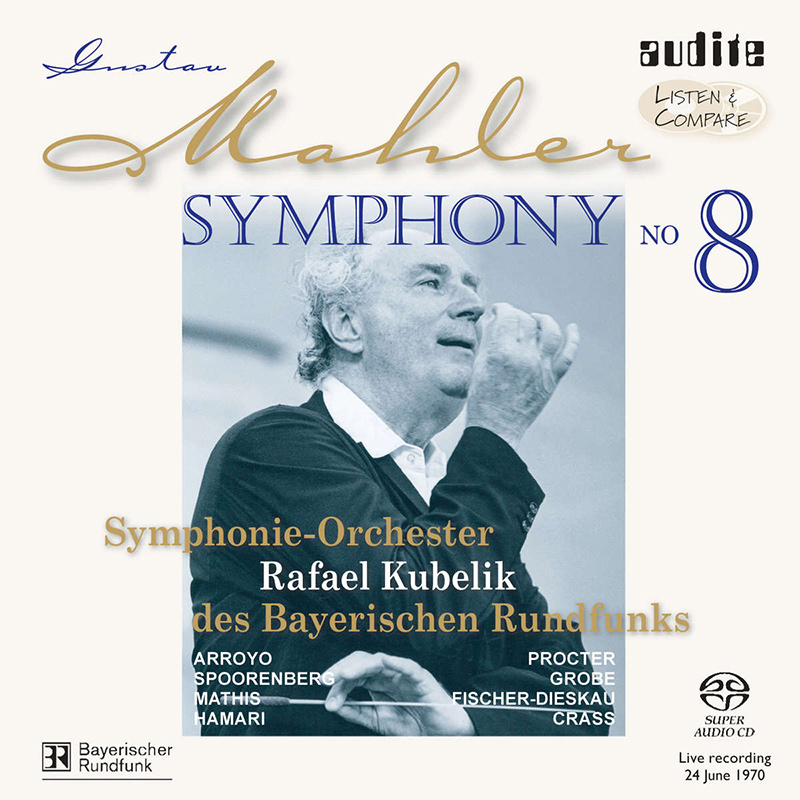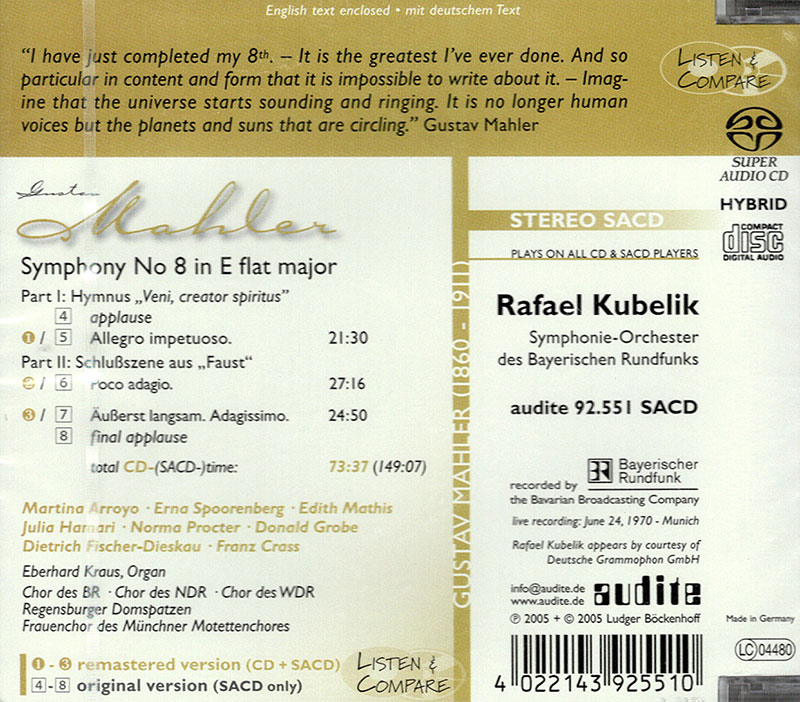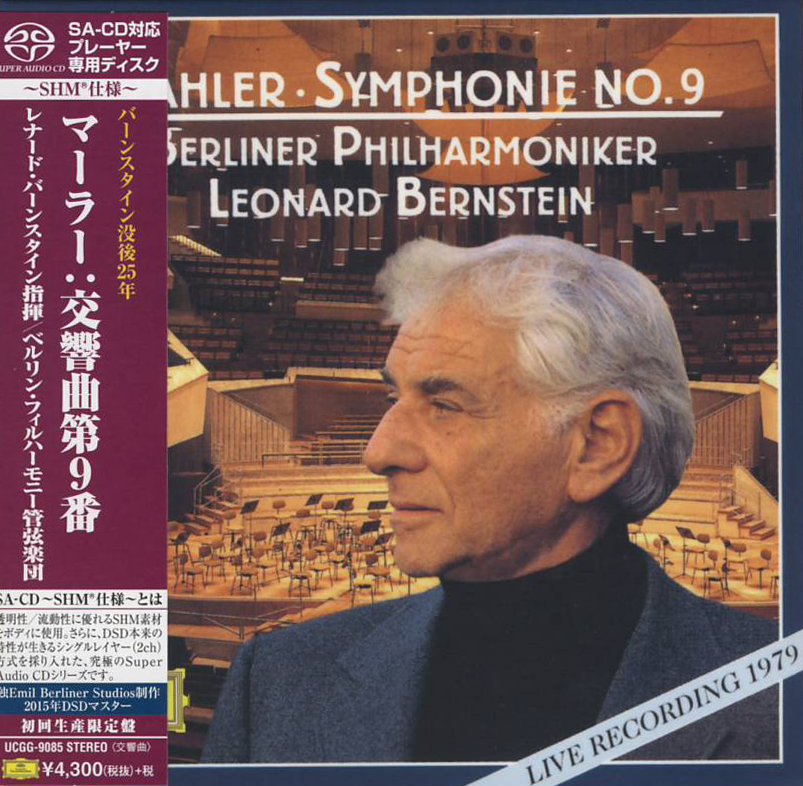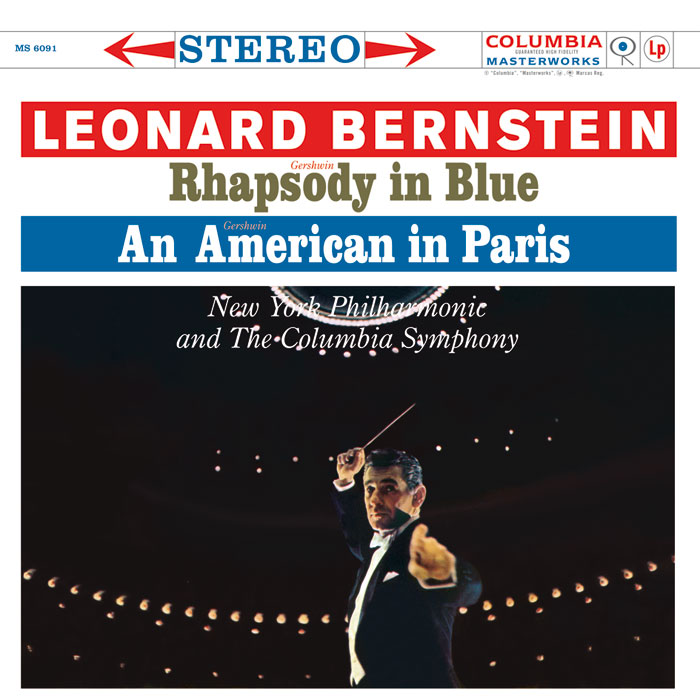Logowanie
Mikołaj - ten to ma gest!
Elton John, The Mamas & The Papas, Cat Stevens, Rod Stewart, Bobbie Gentry, Stevie Wonder, Engelbert Humperdinck
Memory Lane
Edycja Numerowana - 1000 egzemplarzy w skali światowej
RACHMANINOV, Eiji Oue, Minnesota Orchestra
Symphonic Dances / Vocalise
Best Recordings of 2001!!! NAJCZĘŚCIEJ KUPOWANA PŁYTA Z RR!
Karnawał czas zacząć!
Music of Love - Hi-Fi Latin Rhythms
Samba : Music of Celebration
AUDIOPHILE 24BIT RECORDING AND MASTERING
CHOPIN, LISZT, DEBUSSY, DVORAK, Gerhard Oppitz
Dances romantiques - A fantastic Notturno
Wzorcowa jakość audiofilska z Clearaudio
Winylowy niezbędnik
ClearAudio
Double Matrix Professional - Sonic
najbardziej inteligentna i skuteczna pralka do płyt winylowych wszelkiego typu - całkowicie automatyczna
MAHLER, Martina Arroyo, Dietrich-Fischer Dieskau, Symphonie-Orchester des Bayerischen Rundfunk, Rafael Kubelik
Symphony No. 8 'Symphony of a Thousand'

- Martina Arroyo - soprano
- Dietrich-Fischer Dieskau - baritone
- Symphonie-Orchester des Bayerischen Rundfunk - orchestra
- Rafael Kubelik - conductor
- MAHLER
Seria 'Listen & Compare'
"Und so hört man auf dieser Platte eine der zügigsten, lebendigsten pulsierendsten und kontrastreichsten Interpretationen dieser Symphonie, die ich kenne." (Pizzicato) Symphony No. 8 is Mahler’s most monumental symphony, for it is itself a combination of two enormous choral cantatas; in it, Mahler brings together “Veni, creator spiritus”, the old Pentecostal hymn of Hrabanus Maurus, with Goethe’s Faust II. The two texts could hardly be more dissimilar, which is why the music also makes very different demands on the listener in the two respective parts. The first part of the Symphony is complete in itself; the ecstatic enthusiasm of the hymn alternates with intimate passages, then leading back to the opening hymn-like character at the end. The second part, a setting of the Faust text, is not only two-and-a-half times as long as the first but also far more complex. Goethe’s esoteric poetry allows Mahler to ascend into ever higher spheres. However, his music almost always does justice to Goethe’s words and the scenic description; Mahler’s celestial visions are manifested in this tremendous work. The ensemble, consisting of an eight-part double choir, a boys’ choir, 8 soloists and a huge orchestra including organ earned the Symphony its nickname “Symphony of a Thousand” before its premiere. Even if Mahler insisted on crossing out this subtitle on the announcement poster, it does indeed express the work’s monumental quality very well. This live recording of 24 June 1970 in the Kongreßsaal des Deutschen Museums in Munich with Rafael Kubelik and the Bavarian Radio Symphony Orchestra is issued in SACD format. It is the continuation of our series “LISTEN & COMPARE”, which offers the SACD listener the possibility of directly comparing the revised, updated version to the completely unadulterated original archive recording. Seria LISTEN & COMPMARE jest szalenie interesującym przedsięwzięciem a zarazem wielkim wyzwaniem dla nowoczesnej techniki, konfrontowanej a dokumentarnością nagrania. Oto otrzymują Państwo płytę, która na ścieżce podstawowej zawiera zreamsterowaną wersję nagrania. Na warstwie SACD - także na nowo opracowana, zremasterowana wersja nagrania, w standardzie SACD, ale także - na ścieżce SACD - pełna analogowa wersja pierwszego zapisu. Innymi słowy - materiał z taśmy- matki, surowy, bez najmniejszych ingerencji współczesnej techniki. I tu zaczyna się problem. Które nagranie jest lepsze? Którego brzmienie jest bardziej naturalne? Czy współczesna technika potrafi wzbogacić, uwypuklić, wzmocnić efekt artystyczny? Na pytania te nie da się odpowiedzieć bez posłuchania. Ale zapewniam, że po wybrzmieniu ostatnich akordów powyższe zadanie wcale nie okaże się łatwiejszym! Wielu wrażeń! (a te - gwarantuję, wystąpią wręcz w nadmiarze!)

































